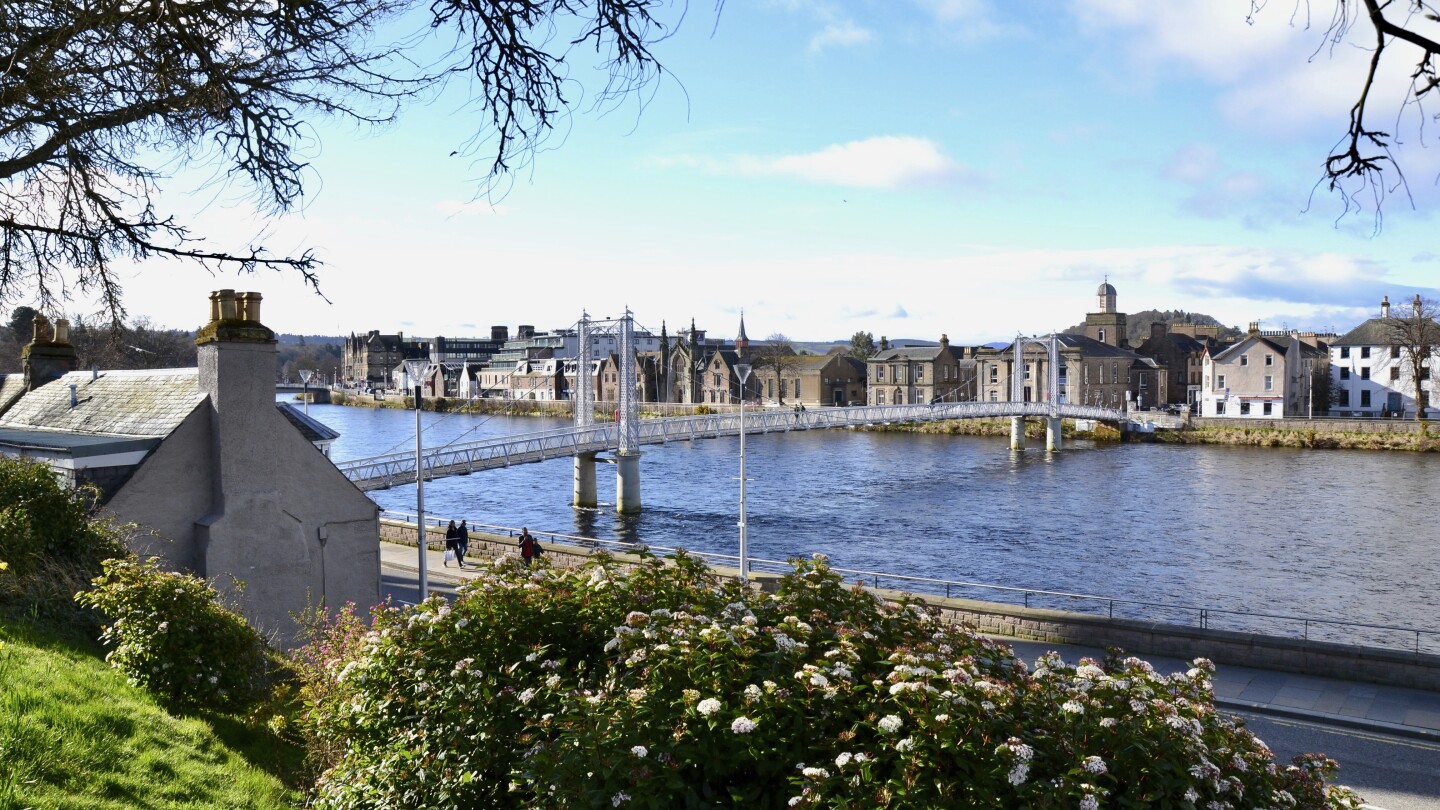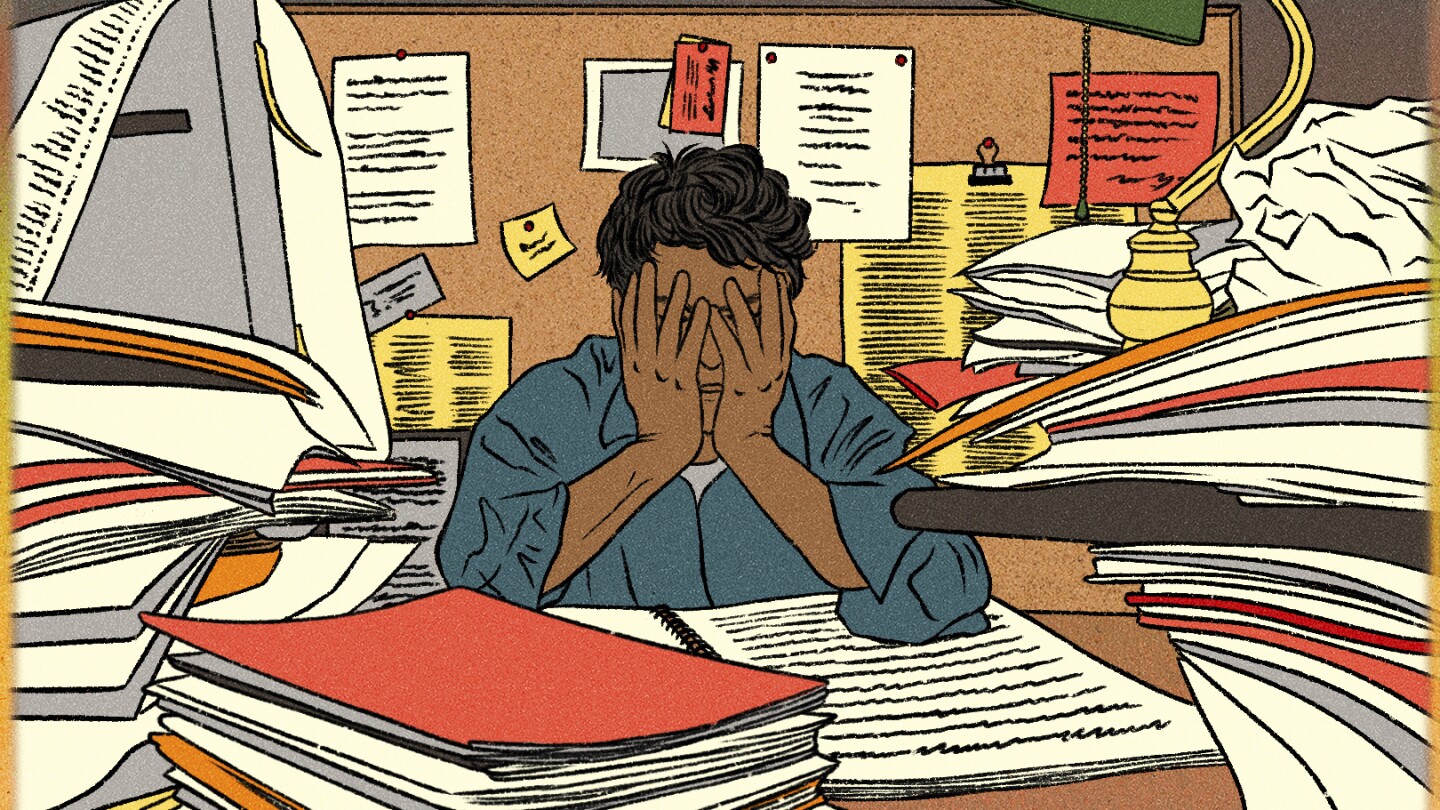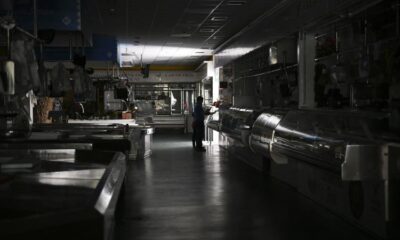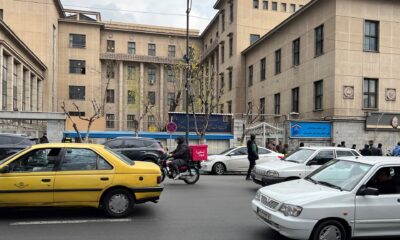Lifestyle
who will tailor the pope’s robes outfits

ROME, Italy (AP) —
As cardinals gather in Rome for the start next week of the conclave, where they will vote for the successor to Pope Francis, two longtime papal tailors are also pondering the transition.
There are no clear frontrunners for pontiffs — unsurprisingly, given the secretive nature of a process that is supposed to be more about inspiration from the Holy Spirit than politicking.
And the tailors said they haven’t received orders yet to make different-sized cassocks.
Raniero Mancinelli, who’s been working on papal vestments since the early 1960s, said he’s prepped three robes — sizes small, medium and large — to donate to the Vatican anyway.
He recalled that the very quality of the fabric depends on a pope’s preference.
“Francis preferred things that were much simpler and practical,” Mancinelli said inside his shop, just down the street from one of the Vatican’s main entrance gates. “Ratzinger (Pope Benedict XVI) liked slightly more choice fabrics.”
Lorenzo Gammarelli, the sixth-generation owner of an ecclesiastical tailor shop in downtown Rome, recalled the family lore that when John XXII was elected, the cassock was too small.
“So they had to intervene in the background, use pins to take it out so he could appear on the balcony,” Gammarelli said.
___
This is a photo gallery curated by AP photo editors.
Lifestyle
The Scottish Highlands offer visitors a mix of history and modernity

INVERNESS, Scotland (AP) — As we crossed the Keswick Bridge into the rolling hills outside Inverness, green fields of early-spring barley still had months to grow until harvest. The grain will be sent to a nearby malting factory and eventually made into whisky at some of Scotland’s 150-plus distilleries.
Interspersed among the barley fields were yellow rows of flowering rapeseed, used to make cooking oil, and herds of grazing sheep that seemed to outnumber people.
It was a tableau I thought would have been the same for a thousand years. But rapeseed only started to be planted in the 1970s, and at one point there were a lot more people than sheep, said my guide, Cath Findlay.
During the tumultuous hundred years of the Highland Clearance, landowners kicked out most of the tenants and replaced them with sheep, which were more valuable to them than people, Findlay said.
“At the time, the British government were fighting all over the world, and they needed wool for uniforms and meat for their soldiers,” she said. “So in much of the Highlands, we see that it’s hilly, and there’s lots of sheep.”
The history lesson resonated because it was obvious throughout my week in Scotland that the past is very much present. But Inverness and its environs are hardly stuck in the past.
Small, but thriving
Inverness is the gateway to the Highlands, a rugged, windswept region of northwest Scotland. The small but thriving city, one of the fastest-growing in the United Kingdom, is best known as the jumping-off point for mystical monster hunters attracted by the legend of Loch Ness.
In recent years, however, it’s carving out an international identity beyond whisky, Nessie and tartan plaid, though there still is plenty of that too.
The center of town can be crossed on foot in a leisurely 15 minutes. Overlooking a cliff at one end, the red sandstone Inverness Castle was covered in scaffolding when I visited this spring. A renovation to turn it into an interactive attraction focused on stories of the Highlands is expected to finish this year.
Right in the center is the recently refurbished Victorian Market, a once bustling hall that was on the verge of closing anyway when the COVID lockdown arrived.
Town leaders took advantage of the moment to breathe new life into it. The market now includes a mix of craft stores, cafes, jewelry shops, barbers and one remaining butcher (try their meat pies, which Findlay said are better than homemade).
The seafood market was replaced with a lively food hall, with the acclaimed Bad Girls Bakery as its first tenant. Following soon were innovative but affordable seafood at The Redshank, pulled meat at Ollie’s Pops, vegan at Salt N Fire, and more.
Now, there is live music every day and 75,000 people pass through the market during busier weeks — nearly the size of the population of the entire city.
“It was dead as a doornail, and now it’s the beating heart of the town,” Findlay said.
Just up Church Street, the main drag, The Walrus and Corkscrew opened soon after as the town’s only wine bar. And nearby at Black Isle Bar, wood-fired pizzas come paired with one of 24 organic beers that the owners brew on their own farm just outside town.
A story with your meal
In the nearby village of Beauly, the Downright Gabbler guesthouse has four suites and a full-time storyteller.
Garry Coutts and his wife, Jane Cumming, opened with a small dining room and their daughter Kristy as chef. It’s not a restaurant, exactly, but they hold several themed events each week that combine Coutts’ encyclopedic knowledge of Scottish history and legend with their daughter’s modern take on traditional dishes.
Among the events is the regularly held Highland Banquet, six courses that trace the region’s people from prehistory to modern times. Venison carpaccio with pickled blackberries, for instance, was inspired by hunter-gatherers, although Coutts noted they ate much more seafood and foraged vegetables than deer.
“They’re very difficult to catch,” Coutts quipped. “They run away!”
The courses unfolded with stories peppered throughout, ranging from some illegal origins of Johnnie Walker’s whisky blends to the couple’s distaste for Las Vegas. Also on the table was a deck of cards, each printed with the name of a prominent Scot to be drawn at random for a story told on the fly.
I pulled Alexander Graham Bell, who likely holds the record for having the most challenges from competitors for patent infringement, Coutts said.
“It’s amazing the number of Americans that come in here and tell me he’s not Scottish,” he said.
If you go
Where to stay: Lodgings include the Ness Walk Hotel, a modern, five-star property a 20-minute walk from the center, and the Heathmount Hotel, a cozy, independent, three-star option within a 10-minute walk of Church Street.
Travelers tip: For such a small town, there is a shocking amount of live music. Performers attract crowds at Hootananny and The Highlander every night, and most nights at MacGregor’s, among other spots. First, stop into The Malt Room for a whisky flight chosen from their list of 350 single-malts.
Find more information on visitscotland.com.
___
EDITOR’S NOTE: Albert Stumm writes about travel, food and wellness. Find his work at https://www.albertstumm.com
Scottish history meets modern as the Highlands grow beyond whisky and Loch Ness
Lifestyle
How to clear out clutter in your workspace

NEW YORK (AP) — It starts with a Post-it note scrawled with a reminder. Then a chocolate bar you’ll probably eat later. An extra charging cord or two find their way into the mix, along with a laptop, a folder full of projects, a lanyard from a recent conference and a permission slip sent home from school.
And soon, the pile of things on your desk that are set aside for later becomes a giant, overwhelming stack.
The chaos of modern life and the ease of accumulating cheap items through online shopping have contributed to an abundance of clutter. That’s true in home offices and traditional workspaces alike. And those jumbles of misplaced belongings can drain our mental resources, distracting us from work and dragging down our productivity.
“Clutter reduces our bandwidth. It negatively affects our perception of our environment or ourselves,” said Marietta Van Den Berg, psychiatrist and medical director for Surrey Memorial Hospital in British Columbia. “It influences whether we make good choices or not. And it even influences our levels of stress and our levels of sleep.”
Researchers at UCLA found that women who were living with a high density of household objects had high levels of the stress hormone cortisol.
As households and workplaces embark on spring cleaning, it’s possible to reduce clutter and find more mental peace.
This article is part of AP’s Be Well coverage, focusing on wellness, fitness, diet and mental health. Read more Be Well.
“Things circulate into our lives all too easily. We need a competitive plan for things to circulate out,” said Matt Baier, owner of Matt Baier Organizing in Stamford, Connecticut. “A good example of that is buying on Amazon. It’s so easy. Boxes come in. We have so many houses that are just piled with boxes, opened and unopened, things that need to be returned, boxes that need throwing out.”
A pile of postponed decisions
There are many reasons we accumulate clutter. Sometimes we don’t know where to put whatever’s landed in our hands. Other times a paper represents a task — whether it’s paying a bill or making a phone call — that we can’t tackle right away.
“Clutter is actually just a postponed decision or action,” Van Den Berg said. “It’s things we pick up and put down. So we’re not making a decision about that piece of paper on your desk, or that book.”
Taking a minute to put an item away in its proper place can save time in the long run. The paper that requires a phone call can go into a bin labeled “Action Items.”
“If everything’s chaotic and you can’t find anything, you’re not bringing your best self to work,” said Renee Brown, owner of Renee Brown Organizing, based in Minneapolis.
Making time for decluttering
A messy workspace can be intimidating. But you don’t have to tackle it all in one day, Brown said. Committing to small decluttering sessions over the course of a week or months can make a difference.
“ Look at your schedule. Can you find 15 minutes or 30 minutes and block it?” Brown asked. If you have more time, spend an hour. Set a timer and see how much you can get done, she advised.
Some workplaces are setting aside time for employees to declutter their files and email inboxes weekly or quarterly, said Jenny Albertini, owner of Decluttered by Jenny, who works with individual and corporate clients.
“It’s OK to spend an hour a week or however much you need to declutter your inboxes, organize your files,” Albertini said. “Having that time scheduled in is what makes people feel accountable.”
Employees can gather on Zoom to support each other while decluttering, she said.
Start by sorting
Many professional organizers suggest sorting objects of the same category together. That way, you can see how much of each group you have and let go of any extras. After gathering office supplies, you may find you have more staplers or charging cords than you’ll ever need.
And with the full picture, Albertini said, “we can suddenly say, ‘Oh, I didn’t realize I kept buying extra pens, because some were in this drawer, and some were over in this cup, and some were in that shopping bag on the floor.’”
Baier, who demonstrates decluttering strategies on YouTube, recommends sorting on a clean surface such as a folding table. Set up bins for trash, recycling and papers to shred. Bankers boxes are convenient for sorting, and you can label them with sticky notes for categories such as electronics, office supplies and keepsakes, he said.
Label one box “elsewhere” for items that belong in a different room; but distribute them later so you don’t get distracted, Baier said.
Once you’ve sorted items into categories, then go through each box to eliminate what you don’t need.
Tackling piles of papers
When facing a mass of paperwork, consider whether you’re legally required to keep certain files, and then ask, “when was the last time you used this document?” Albertini said.
“Do you have anything coming up that you know you need it for? Is this hard copy the only one? Would you be able to do your work or task if you didn’t have this anymore?” she said.
Baier recommends dividing papers into four groups: running files, which you need to act on; sitting files, which you need to access regularly; sleeping files, which you need to keep just in case but can store remotely; and dead files, which you no longer need.
“Identify why you keep the files, because when you’re clear on why you keep something, it takes you to where it should go,” Baier said.
With a paper decluttering system in place, you can repeat it annually and it should only take about 20 minutes, he said.
Digital decluttering
When organizing digital files, take the same approach as paper: Sort into categories, then reduce. Work in short bursts of time to prevent decision fatigue, Albertini said.
“We’re really looking to deduplicate items or reduce the number that you have that really aren’t that special,” Albertini said.
With presentations, delete drafts and keep the final product. If you have photos of an event, choose the best two or three and delete the rest. With email, ask yourself, “Will I need this email again to get my job done? Will it provide knowledge or motivation for future work?” If the answer is no, delete it, Albertini said.
In some email programs, you can automatically send mail from a specific client or team into a folder. If you have thousands of unread emails, you can move those to a digital archive at the end of the year, Brown said.
Think before you buy
One obvious way to reduce office clutter is to buy fewer things. It can be tempting to buy drawer dividers or trays to organize pens and scissors. But another route is to reuse cardboard iPhone or greeting card boxes.
“You don’t have to go out and get expensive items,” Brown said. “Let’s find what you already have in the house and use it instead.”
___
Share your stories and questions about workplace wellness at [email protected]. Follow AP’s Be Well coverage, focusing on wellness, fitness, diet and mental health at https://apnews.com/hub/be-well.
Lifestyle
These papal tailors aren’t expecting a traditional order for new cassocks to outfit the next pope

ROME (AP) — Two papal tailors and no conclave orders.
The conclave that begins next Wednesday to elect a successor for Pope Francis is the first in 46 ½ years for which the Vatican hasn’t ordered a set of cassocks for the new head of the Catholic Church — at least from the two best-known papal tailors.
That isn’t stopping Ranieri Mancinelli, who opened his ecclesiastical tailoring shop near the Vatican in the 1960s, from making three simple white cassocks just in case: the traditional small, medium and large sizes to cover all possible heights and girths.
“I’m doing this on my own to be able to present these cassocks for the next pope, without knowing who he will be,” Mancinelli said.
Gammarelli, another family-run ecclesiastical tailor near the Pantheon in the historic center, has a paper trail showing it has received cassock orders for every conclave since the beginning of the 20th century — and probably far earlier. Gammarelli has been making garments for priests, bishops and cardinals since 1798.
The last time no pre-conclave order came in to the Vatican’s tailor of choice, Gammarelli, was October 1978, when cardinal electors voted a successor to Pope John Paul I, who died after 33 days as pontiff, said Lorenzo Gammarelli, representing the sixth generation of the family business.
Gammarelli won’t speculate why no order was made this year, but Italian media suggests the Vatican has enough unworn cassocks on hand, and is honoring Pope Francis’ message of environmental and economic sustainability.
“Obviously, we’re a little sorry, because in the sadness caused by the death of the Holy Father, we still would have the beautiful thing of having to make the trousseau for the new one. Not this time,” Gammarelli said.
The Vatican declined to comment on what is being viewed as the great papal cassock race. “I don’t think I need to speak on behalf of businesses,” said Vatican spokesman Matteo Bruni. “Not every curiosity needs to be answered.”
The papal trousseau
For a pope’s first encounter with the flock, the basic garment is the hand-stitched white wool cassock with white cape and wide silk sleeves. The cassock is fastened by silk buttons and worn with a silk brocade sash with gold fringe. All popes, until Francis, had this sash later embroidered with his papal seal.
Francis also eschewed the classic burgundy red mozzetta, a short elbow-length cape worn for formal occasions, and a gold embroidered stole, not only the night of his election but throughout his papacy.
The papal garb is finished with a white “zucchetto,” or skullcap that is also worn by cardinals in red and bishops in purple.
When they are called on to provide a conclave order, Gammarelli also provides shoes in an array of sizes so the new pope will be comfortable when presented to his flock. After that, Gammarelli said, “shoes are a very personal matter.”
In keeping with the secrecy of the conclave, Gammarelli never reveals papal prices.
Sizing up the next pope
While the world speculates on who will be the next pope, Gammarelli’s job is more practical. The family has a system to best outfit the unknown successor, using data from their cardinal clients and sizing up cardinal candidates who are not.
“We consider who, in our opinion, could be elected,” Gammarelli said. “We pull out their measurements, and … we make three cassocks that would more or less fit all of them.’’
Balcony mishaps
Their best guesses are sometimes off.
Gammarelli said they never imagined that Polish Cardinal Karol Wojtyla would become pope in October 1978. They had considered Argentine Cardinal Jorge Mario Bergoglio a candidate in 2005 (when Benedict XVI was elected) but not in 2013, when Bergoglio became the church’s first Latin American pope.
Back in 1958, the portly John XXIII appeared on the balcony of St. Peter’s Basilica with safety pins holding together the back of his cassock, after a too-small size was mistakenly grabbed, forcing aides to open the back.
Gammarelli said that throughout Francis’ 12-year papacy he tried to persuade the pope to wear white pants under his cassock. But Francis stuck with the black trousers of a priest, a reminder to himself and everyone that he was a pastor at heart.
Francis’ unadorned style
Mancinelli, at his shop just steps from the Vatican, has made cassocks for the last three popes: St. John Paul II, Pope Benedict XVI and Pope Francis.
He got to know Benedict when he was a cardinal, living near Mancinelli’s shop. Francis later invited him to his apartment in the Santa Marta residence, marking “the beginning of a very pleasant encounter period.”
While Gammarelli won’t make the cassocks on speculation, Mancinelli is making three to give to the Vatican, in Francis’ simple, unadorned style.
“Compared with the other two, Francis preferred much simpler and much more practical things,” he said, also taking costs into account.
Only after the words “Habemus Papam!” are announced from the balcony of St. Peter’s Basilica will it be clear whether the Catholic Church’s 267th pontiff will follow Francis’s unembellished example or will bring back traditional papal trappings, like flashes of red.
____
AP video journalist Silvia Stellacci contributed to this report.
-

 Conflict Zones1 day ago
Conflict Zones1 day agoAbout 600 North Korean soldiers killed in war in Ukraine, lawmakers say | Russia-Ukraine war News
-

 Africa2 days ago
Africa2 days agoResearchers study using planes to cool the earth amidst global warming
-

 Africa2 days ago
Africa2 days agoBomb Blast Kills 26 in Northeast Nigeria
-

 Lifestyle2 days ago
Lifestyle2 days agoAfter a year of turmoil, The Washington Post is taking note of its journalism again
-

 Europe1 day ago
Europe1 day ago16-year-old suspect detained after 3 killed in shooting in Sweden
-

 Europe2 days ago
Europe2 days agoWhat caused the power outage in Spain and Portugal? Here’s what we know
-

 Middle East1 day ago
Middle East1 day agoIran hangs man convicted of spying for Israel’s Mossad | Espionage News
-

 Asia2 days ago
Asia2 days agoFall of Saigon: US officers who broke rank to save lives recall final days of Vietnam War 50 years on




